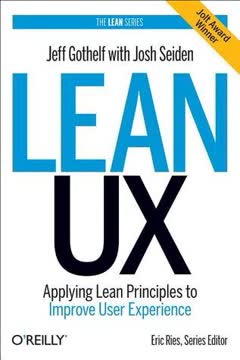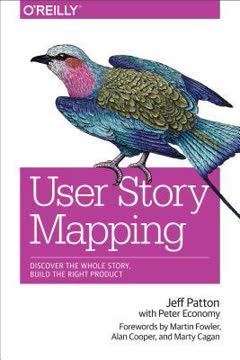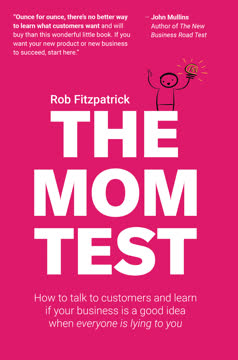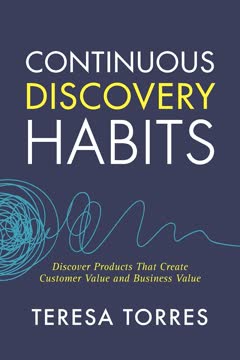가지 주요 요점
1. 지속적인 발견: 고객이 원하는 제품을 만드는 열쇠
최소한 제품을 만드는 팀이 매주 고객과 접촉하여 원하는 결과를 추구하는 작은 연구 활동을 수행해야 합니다.
지속적인 발견은 지속적인 고객 연구와 실험을 포함하는 구조화된 제품 개발 접근 방식입니다. 이는 팀이 일관되게 가치를 제공하도록 돕습니다:
- 고객의 변화하는 요구를 이해하기 위해 매주 고객과 소통
- 대규모, 드문 연구 대신 작은, 빈번한 연구 활동 수행
- 단순히 기능을 출시하는 것이 아니라 명확한 원하는 결과 추구
- 제품 팀 전체(제품 관리자, 디자이너, 엔지니어)가 고객 연구에 참여
이 접근 방식은 팀이 고객의 요구에 밀접하게 맞추고, 새로운 정보에 빠르게 적응하며, 증거 기반의 제품 결정을 내릴 수 있도록 합니다. 발견을 일회성 단계가 아닌 지속적인 습관으로 만들면, 팀은 고객이 진정으로 원하고 사용하는 제품을 더 신뢰성 있게 만들 수 있습니다.
2. 진정한 가치를 창출하기 위해 결과에 집중하라
당신은 결코 하나의 기능만으로 성공할 수 없으며, 앞으로도 그럴 일은 없을 것입니다.
출력에서 결과로 사고 전환. 이는 다음을 의미합니다:
- 단순히 기능을 출시하는 것이 아니라 고객과 비즈니스에 창출된 가치로 성공 정의
- 명확하고 측정 가능한 결과 설정 (예: 고객 유지율 10% 증가)
- 팀이 결과를 달성하는 방법에 대한 자율성 부여
- 제품 변경이 원하는 결과를 이끌어내는지 정기적으로 평가
결과 중심의 이점:
- 팀의 노력을 비즈니스 목표와 일치시킴
- 문제 해결 방법에 대한 혁신 장려
- 초기 솔루션이 작동하지 않을 때 피벗 가능
- 단순한 활동이 아닌 진정한 영향 측정
결과에 집중함으로써, 팀은 끝없이 기능을 출시하면서도 실제 가치를 창출하지 못하는 "빌드 트랩"을 피할 수 있습니다. 그들은 고객과 비즈니스에 대한 작업의 실질적인 영향을 보면서 동기부여를 유지합니다.
3. 고객 기회를 매핑하고 우선순위 지정
구조는 복잡합니다. 그것은 완료되고, 취소되고, 다시 완료됩니다.
기회 솔루션 트리 만들기. 이 시각 도구는 팀이 다음을 할 수 있도록 돕습니다:
- 고객의 필요, 고통점, 욕구(기회)를 매핑
- 기회를 광범위한 것에서 구체적인 것으로 계층적으로 구조화
- 먼저 다룰 기회를 우선순위 지정
- 잠재적 솔루션 생성 및 평가
트리 구축 및 사용 단계:
- 원하는 결과를 맨 위에 설정
- 고수준 기회 영역으로 분기
- 각 영역을 더 구체적인 기회로 세분화
- 기회를 다음 기준에 따라 평가:
- 고객에게 중요한지
- 결과에 미치는 잠재적 영향
- 해결 가능성
- 집중할 목표 기회 선택
- 해당 기회에 대한 여러 솔루션 아이디어 생성
트리는 문제 공간에 대한 공유 이해를 제공하고 팀이 노력을 집중할 전략적 결정을 내리는 데 도움을 줍니다. 이는 팀이 고객과 시장에 대해 더 많이 배울수록 진화하는 살아있는 문서입니다.
4. 정기적인 고객 인터뷰를 통해 진정한 요구 발견
사람들은 당신이 보여주기 전까지는 자신이 무엇을 원하는지 모릅니다.
솔루션을 검증하는 것이 아니라 기회를 발견하기 위해 인터뷰. 주요 원칙:
- 지속적인 학습 루프를 유지하기 위해 매주 인터뷰 수행
- 일반적인 의견이 아닌 구체적인 이야기 수집에 집중
- 가상의 미래 행동이 아닌 최근 경험에 대해 질문
- 단순한 기능 요청이 아닌 근본적인 요구를 듣기
인터뷰 구조:
- 범위 설정: 탐색할 고객 경험의 부분 정의
- 구체적인 이야기 요청: "마지막으로 ~했을 때에 대해 이야기해 주세요..."
- 더 깊이 파고들기: 맥락과 동기를 이해하기 위한 후속 질문 사용
- 기회 포착: 표현된 필요, 고통점, 욕구 기록
- 통합: 주요 인사이트를 요약한 인터뷰 스냅샷 생성
정기적인 인터뷰는 팀이 고객의 현실과 연결되고, 새로운 트렌드를 포착하며, 공감을 쌓는 데 도움을 줍니다. 이는 제품 결정을 알리는 지속적인 기회 흐름을 제공합니다.
5. 여러 솔루션 아이디어 생성 및 테스트
창의적인 팀은 양이 질의 최고의 예측 변수임을 알고 있습니다.
광범위하게 아이디어를 내고, 집중하기. 접근 방식:
- 개별적으로 많은 아이디어 생성 (각자 15-20개 목표)
- 팀으로 아이디어 공유 및 서로의 개념을 발전
- 탐색할 유망한 솔루션 3개 선택
여러 솔루션의 이점:
- 혁신적인 접근 방식을 찾을 가능성 증가
- 단일 아이디어에 대한 집착 감소
- 옵션 비교 및 대조 가능
테스트 과정:
- 각 솔루션의 간단한 프로토타입 또는 목업 생성
- 명확한 평가 기준 정의 (예: "10명 중 7명이 작업을 완료할 수 있음")
- 소수의 고객과 테스트 (5-10명)
- 솔루션 간 결과 비교
- 학습에 따라 반복 또는 피벗
여러 솔루션을 병렬로 탐색함으로써, 팀은 더 빨리 승리하는 아이디어를 식별하고 최적이 아닌 접근 방식에 과도하게 몰입하는 것을 피할 수 있습니다.
6. 초기의 중요한 가정 식별 및 테스트
좋은 테스트는 결함 있는 이론을 죽이고, 우리는 다시 추측할 수 있게 됩니다.
위험한 가정을 표면화하고 테스트. 단계:
- 각 솔루션 아이디어에 대한 가정 목록 작성 (선호도, 실행 가능성, 실현 가능성)
- 중요성과 불확실성에 따라 가정 매핑
- "신념의 도약" 가정 식별 (높은 중요성, 높은 불확실성)
- 이러한 중요한 가정을 테스트하기 위한 작은 실험 설계
- 테스트 실행 전에 명확한 성공 기준 설정
가정 테스트 유형:
- 스모크 테스트: 구축 전에 관심 측정 (예: 랜딩 페이지 가입)
- 오즈의 마법사: 기능을 수동으로 시뮬레이션
- 컨시어지: 초기 사용자에게 고급 서비스 제공
- 가짜 문: 존재하지 않는 기능에 대한 클릭 측정
초기에 가정을 테스트하면 팀이:
- 아이디어를 빠르게 검증 또는 무효화
- 잘못된 것을 구축할 위험 감소
- 더 빠르게 학습하고 반복
- 데이터 기반의 결정을 내릴 수 있음
가정을 체계적으로 식별하고 테스트함으로써, 팀은 개발에 크게 투자하기 전에 솔루션 아이디어에 대한 신뢰를 높일 수 있습니다.
7. 발견 및 전달 과정에서 영향 측정
당신의 망상은 아무리 설득력이 있어도 데이터의 가혹한 빛 아래에서 시들 것입니다.
결과를 측정하기 위해 제품 도구화. 주요 단계:
- 원하는 결과에 맞춘 명확한 지표 정의
- 해당 지표를 추적하기 위한 분석 도구 구현
- 변경하기 전에 기준선 설정
- 각 제품 반복의 영향을 측정
- 장기 결과의 선행 지표 찾기
고려할 지표 유형:
- 제품 지표: 제품 사용 및 행동 직접 측정
- 비즈니스 지표: 회사 목표에 대한 영향 측정 (수익, 유지율)
- 고객 지표: 고객 만족도 및 성공 측정
모범 사례:
- 작게 시작: 한 번에 모든 것을 측정하려고 하지 않기
- 결정을 알리는 실행 가능한 지표에 집중
- 제품 변경과 결과 지표 간의 상관관계 찾기
- 인내심 가지기: 일부 영향은 시간이 걸릴 수 있음
지속적인 측정은 팀이:
- 솔루션이 원하는 결과를 이끌어내는지 검증
- 개선 영역 식별
- 데이터 기반의 우선순위 결정
- 작업의 가치를 이해관계자에게 입증
8. 발견 주기를 관리하고 필요에 따라 방향 수정
과정을 신뢰하면 위험을 감수할 자신감을 가질 수 있습니다.
발견의 혼란스러운 현실을 받아들이기. 주요 원칙:
- 놀라움을 예상하고 피벗할 준비
- 큰 기회를 더 작고 테스트 가능한 조각으로 나누기
- 단기 승리와 장기 전략적 베팅의 균형 맞추기
- 언제 인내하고 언제 방향을 바꿀지 인식
일반적인 발견 시나리오:
- 기회가 처음 생각했던 것만큼 중요하지 않다는 것을 학습
- 솔루션이 예상보다 더 복잡하다는 것을 깨달음
- 새로운 제약이나 요구사항 발견
- 예상치 못한 고객 행동이나 선호도 발견
놀라움에 직면했을 때:
- 가정과 가설 재평가
- 필요시 발견 과정의 초기 단계로 돌아가기
- 변경 사항과 그 이유를 이해관계자에게 전달
- 원하는 결과로 가는 대체 경로 찾기
새로운 정보에 유연하고 반응적으로 대응함으로써, 팀은 제품 개발의 고유한 불확실성을 탐색하고 가치를 창출하는 최상의 경로를 찾을 수 있습니다.
9. 작업을 보여주며 이해관계자와 협력
리더가 팀의 위치를 더 잘 이해할수록, 팀이 실행할 수 있도록 더 많이 물러날 것입니다.
투명성을 통해 신뢰 구축. 전략:
- 시각적 유물(기회 트리, 스토리 맵)을 사용하여 사고 공유
- 단순한 솔루션이 아닌 원하는 결과로 시작
- 발견 과정과 주요 결정을 이해관계자에게 설명
- 적절한 시점에 입력과 공동 창작 초대
이해관계자 협력의 이점:
- 다양한 관점과 전문 지식 활용
- 제품 결정에 대한 동의 구축
- 새로운 아이디어에 대한 저항 감소
- 제품 작업을 더 넓은 비즈니스 목표와 일치
효과적인 이해관계자 관리 팁:
- 각 이해관계자의 필요와 관심에 맞춘 세부 수준 조정
- 정기적이고 짧은 업데이트가 드문 긴 프레젠테이션보다 종종 더 나음
- 피드백에 개방적이지만, 결정을 지원하기 위해 데이터와 고객 인사이트 사용
- 성공과 가치 있는 실패 모두 축하
발견 과정에 이해관계자를 적극적으로 참여시킴으로써, 팀은 제품 전략에 대한 공유 이해를 만들고 작업에 대한 조직의 지원을 증가시킬 수 있습니다.
마지막 업데이트 날짜:
FAQ
What's "Continuous Discovery Habits" about?
- Focus on Discovery: "Continuous Discovery Habits" by Teresa Torres is about adopting a structured and sustainable approach to product discovery that continuously involves customer input.
- Framework and Habits: The book introduces a framework and a set of habits that help product teams discover opportunities and solutions that create customer and business value.
- Outcome Over Output: It emphasizes focusing on outcomes rather than outputs, ensuring that product decisions are driven by customer needs and business goals.
- Iterative Process: The book advocates for an iterative process where discovery and delivery are interwoven, allowing teams to adapt and learn continuously.
Why should I read "Continuous Discovery Habits"?
- Practical Guidance: The book provides practical guidance on how to implement continuous discovery in your product development process.
- Improved Decision-Making: It helps improve decision-making by teaching how to balance customer needs with business outcomes.
- Real-World Examples: The book includes real-world examples and case studies that illustrate the application of continuous discovery habits.
- Empowerment: It empowers product teams to take ownership of their discovery process, leading to better products and increased confidence in their work.
What are the key takeaways of "Continuous Discovery Habits"?
- Continuous Customer Engagement: Regularly engage with customers to discover and validate opportunities and solutions.
- Outcome-Oriented Mindset: Shift from focusing on outputs to achieving desired outcomes that benefit both customers and the business.
- Structured Discovery Process: Use tools like opportunity solution trees to map and prioritize opportunities and solutions.
- Iterative Learning: Embrace an iterative approach to learning and adapting, ensuring that discovery and delivery inform each other.
What is the "Opportunity Solution Tree" in "Continuous Discovery Habits"?
- Visual Framework: The opportunity solution tree is a visual framework that helps teams map out paths to achieve desired outcomes.
- Structure and Prioritize: It structures the opportunity space, allowing teams to prioritize opportunities and solutions effectively.
- Resolve Tensions: The tree helps resolve tensions between business needs and customer needs by aligning them through opportunities.
- Shared Understanding: It builds a shared understanding across the team, facilitating better collaboration and decision-making.
How does "Continuous Discovery Habits" define continuous discovery?
- Weekly Touchpoints: Continuous discovery involves at least weekly touchpoints with customers by the team building the product.
- Small Research Activities: These touchpoints include small research activities aimed at understanding customer needs and validating assumptions.
- Desired Outcome Focus: The process is in pursuit of a desired outcome, ensuring that discovery efforts are aligned with business goals.
- Iterative and Sustainable: The approach is iterative and sustainable, allowing teams to adapt and learn continuously.
What are the "Continuous Discovery Habits" mentioned in the book?
- Outcome Over Output: Focus on achieving outcomes rather than delivering outputs.
- Visualize Knowledge: Use tools like experience maps and opportunity solution trees to visualize and structure knowledge.
- Continuous Interviewing: Regularly interview customers to discover and validate opportunities.
- Assumption Testing: Identify and test assumptions quickly to iterate on solutions effectively.
How does "Continuous Discovery Habits" suggest prioritizing opportunities?
- Opportunity Sizing: Assess opportunities based on how many customers are affected and how often.
- Market and Company Factors: Consider market trends, competitive positioning, and company strengths and weaknesses.
- Customer Importance: Evaluate how important each opportunity is to customers and their satisfaction with current solutions.
- Iterative Assessment: Use the opportunity solution tree to iteratively assess and prioritize opportunities.
What is the role of "Assumption Testing" in "Continuous Discovery Habits"?
- Identify Assumptions: Identify hidden assumptions behind solution ideas to uncover potential risks.
- Test Quickly: Test assumptions quickly to gather evidence and reduce risk before investing heavily in solutions.
- Iterative Learning: Use assumption testing to iterate on solutions, learning from both successes and failures.
- Compare and Contrast: Test assumptions across multiple ideas to compare and contrast their potential effectiveness.
How does "Continuous Discovery Habits" recommend measuring impact?
- Instrument Prototypes: Instrument live prototypes to evaluate assumption tests and measure impact on desired outcomes.
- Outcome Alignment: Ensure that product changes are aligned with desired outcomes and measure their impact accordingly.
- Iterative Measurement: Continuously measure and iterate on product changes to ensure they drive the intended outcomes.
- Connect Outcomes: Strengthen the connection between product outcomes and business outcomes to ensure long-term success.
What are the best quotes from "Continuous Discovery Habits" and what do they mean?
- "You are never one feature away from success...and you never will be." This quote emphasizes that success is not about delivering a single feature but about continuously addressing customer needs and business goals.
- "Trusting the process can give you the confidence to take risks." It highlights the importance of having a structured discovery process that allows teams to take calculated risks and learn from them.
- "Good tests kill flawed theories; we remain alive to guess again." This quote underscores the value of assumption testing in identifying and discarding flawed ideas, allowing teams to iterate and improve.
How can I start implementing "Continuous Discovery Habits" in my team?
- Start Small: Begin with small, manageable changes and iterate from there, focusing on what is within your control.
- Build a Trio: Form a cross-functional trio of a product manager, designer, and engineer to collaborate on discovery decisions.
- Continuous Interviewing: Develop a habit of continuous interviewing to keep customer needs at the forefront of your process.
- Reflect and Improve: Use retrospectives to reflect on your discovery process and identify areas for improvement.
What challenges might I face when adopting "Continuous Discovery Habits"?
- Organizational Resistance: You may encounter resistance from stakeholders who are accustomed to traditional ways of working.
- Resource Constraints: Limited resources or lack of access to customers can make continuous discovery challenging.
- Balancing Priorities: Balancing discovery with delivery and other responsibilities can be difficult.
- Iterative Learning: Embracing an iterative learning mindset and being open to change can be challenging but is essential for success.
리뷰
지속적인 발견 습관은 독자들로부터 높은 평가를 받고 있으며, 평균 평점은 4.48/5입니다. 리뷰어들은 제품 발견에 대한 실용적인 접근 방식을 칭찬하며, 실행 가능한 프레임워크와 기법을 제공한다고 말합니다. 많은 이들이 이 책을 제품 관리자, 디자이너, 연구자들에게 필독서로 여깁니다. 이 책은 명확성, 실제 사례, 그리고 발견 습관을 구축하는 데 중점을 둔 점에서 찬사를 받고 있습니다. 일부 독자들은 다양한 역할과 산업에 적용 가능하다고 언급합니다. 몇몇 비판은 반복성과 이상주의를 지적하지만, 전반적으로 이 책은 귀중한 통찰력과 실행 가능한 조언으로 강력히 추천됩니다.
Similar Books














